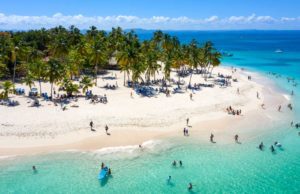Wildlife & Nature
Sea, Salt and Whalesong: Waiting for the Whales in Samaná
Humpback whale and snorkeler in Samaná Bay
Photo: Reinhard Dirscherl / Alamy Stock Photo
Without warning, the mother whale reemerged, pirouetting her entire body out of the water, seemingly just for fun. Utterly enchanted...
Share
One of my favorite childhood picture books, Waiting for the Whales by Sheryl McFarlane, tells the story of an old man who lives alone on a bluff overlooking the sea. He tends his vegetable garden, staring out at the ocean and patiently waiting for a break from his loneliness. Each year, he watches the pod enter the bay and his soul is buoyed by happiness. One year, his estranged daughter arrives for a visit - with his infant grandson in arms. The old man introduces his grandson to the whales, and as the years pass his connection to family is renewed. Ever since reading Waiting for the Whales, the restorative power of whales and the rhythms of the natural world has clung to my imagination.
When I finally got to watch the whales come in, I had recently lost my own grandfather. Would my encounter alchemize my so-called ”lead into gold”, like it did for the grandfather in the tale?
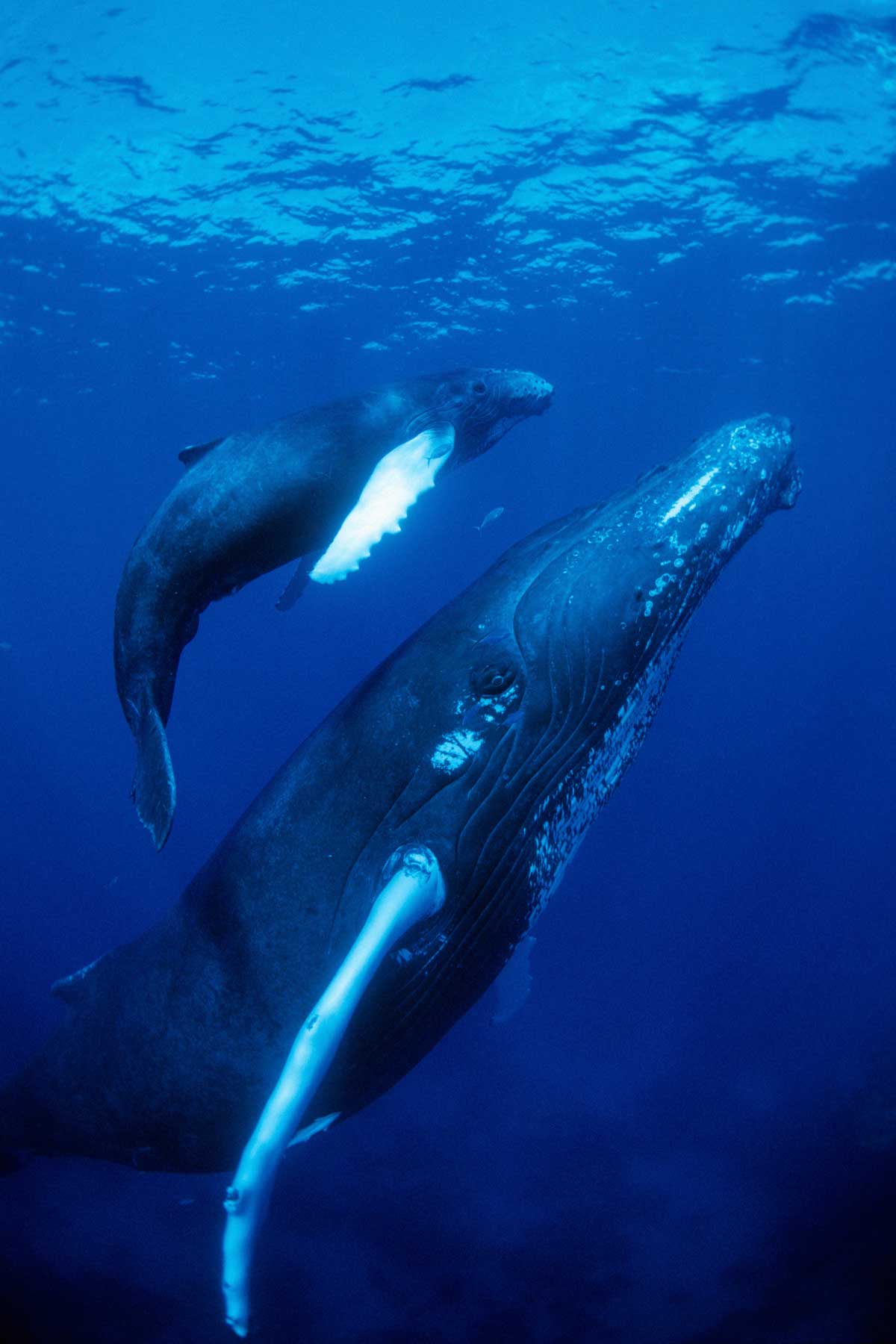
Humpback whale mother and calf in Samaná
Photo: WaterFrame / Alamy Stock Photo
Every year, thousands of humpback whales swim to the Dominican Republic to calve. The best place to see them is Samaná Bay, where protections are in place to ensure the bay remains a sanctuary for the whales. Since the whales have nothing to fear here, they’re delightfully comfortable with boats, offering travelers the rare chance of close encounters.
The Samaná Peninsula is full of natural wonder - rich in sun-soaked white-sand beaches, secluded islands and hidden caves. Centuries ago, pirates camped out in Samaná’s palm-filled forests while out on deep water European and Haitian forces battled for control of the island and its rich resources. As a history-lover and nature-lover, I was lured out to Samaná Bay for my first ever whale-watching adventure.
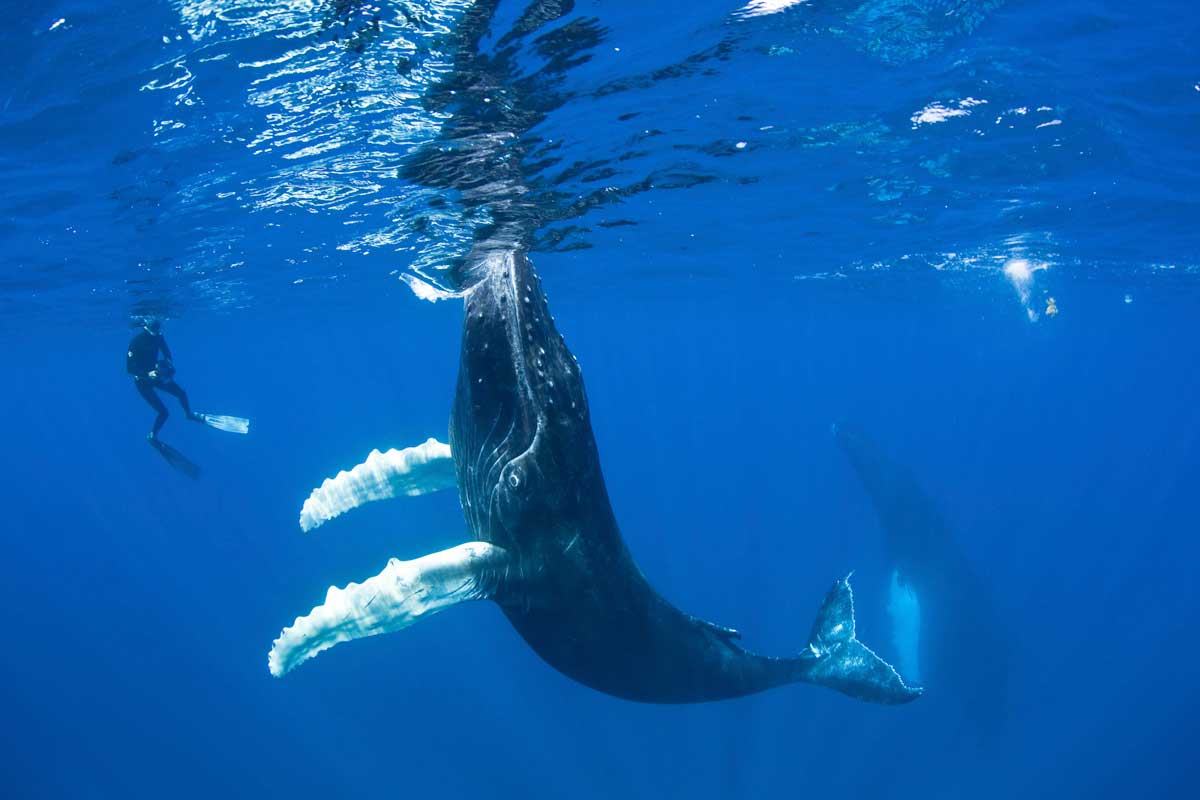
Humpback whale calf and snorkeler in Samaná Bay
Photo: WaterFrame / Alamy Stock Photo
For the best chance to see a whale, you’ll need to get up early. Whales are most likely to surface just after sunrise or around dusk. We arrived at the wharf at 8am to meet our guide, marine biologist and captain Carlos. Carlos has been working on this same boat for more than 12 years, and knows the seas like the face of an old friend.
After we donned life jackets with two dozen other excited guests, I headed to the prow and readied my iPhone and DSLR. We skimmed out onto the emerald green bay, and the rising sun illuminated a stretch of greenish-blue mountains in the distance. I thought whale-watching would entail lots of waiting, patient twiddling of thumbs and scanning the unbroken surface of the sea, but I was wrong - the action started almost immediately.
No more than five minutes out on the water, I noticed two small boats in the distance. I wondered if they were fishing boats - illegal in the bay during calving season. Then a white dorsal fin flashed and I realised I had caught sight of my first humpback whale. Even that far away, the sheer size of them caught my breath in my throat. Our captain gently revved the motor and headed toward the movement.
Shouting over the whine of the motor, the marine biologist seated next to me tells me that by the time we close the distance the whale will likely have gone down for a deep dive, and we might not see more of them. The gap between us and the pair of whales in the distance narrowed steadily until suddenly, from out of nowhere, an enormous whale surfaced directly beside our boat. The captain shut off the motor and I was overwhelmed by a strong fishy smell. The whale was so massive and so close that I could see its blowhole winking open and closed, and I was fleetingly worried it would flip over our boat with a misplaced gesture. My worry gave way to pure awe as I spotted another smaller whale - it was a mother and her calf. Cameras out, the people onboard were snapping like mad. What an experience for my first whale sighting! After a little while, the mother whale submerged down into the emerald water, her calf following close behind.
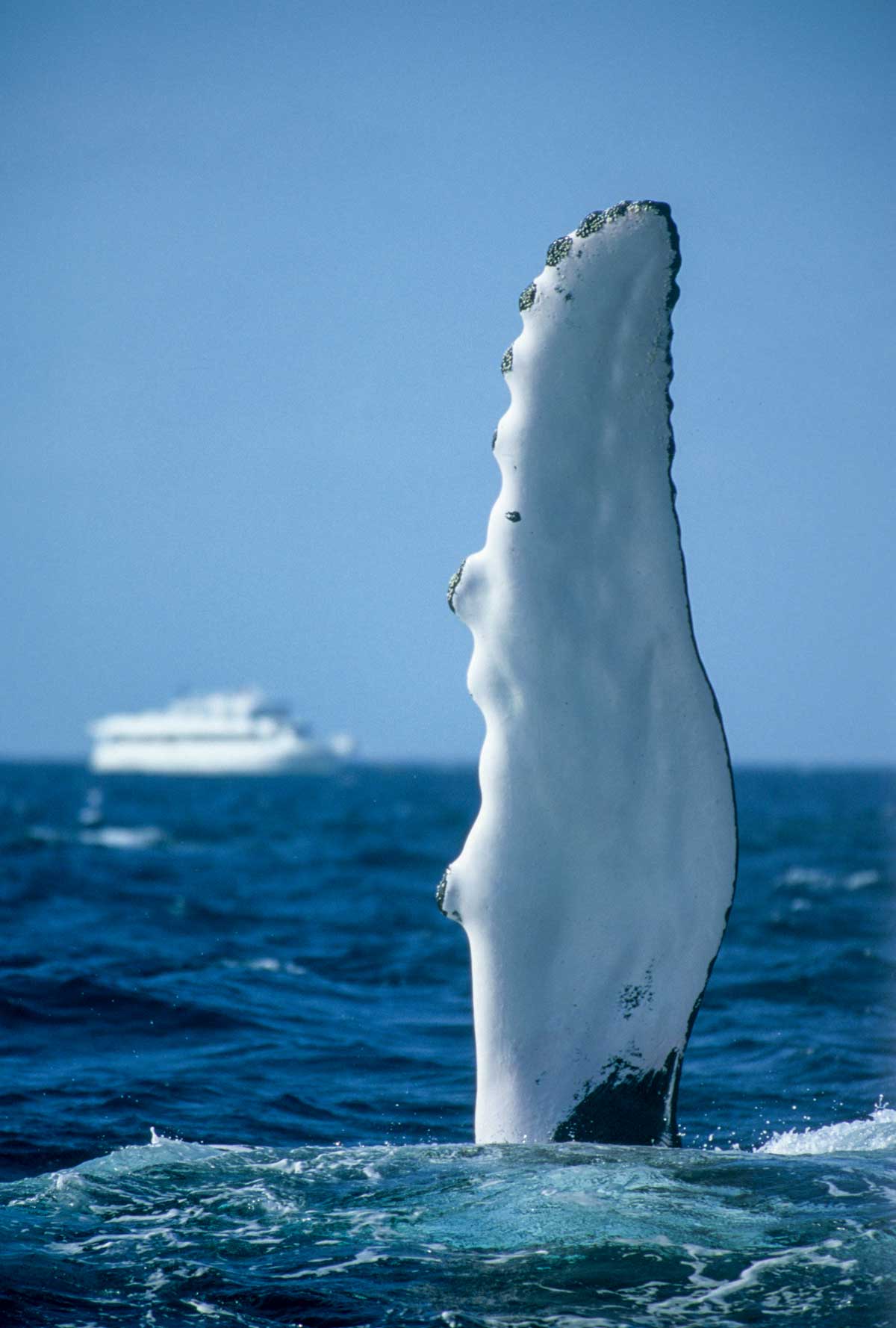
Humpback in Samaná Bay
Photo: Avalon.red / Alamy Stock Photo
I had no idea that we were going to be in for such a treat right out of the gate, and it only got better. A few minutes later, again without warning, the mother whale reemerged, pirouetting her entire body out of the water, seemingly just for fun. Utterly enchanted, the passengers collectively let out an appreciative “wow!”. We launched into National Geographic mode, preparing our cameras for what could be the capture of a lifetime. A humpback whale breaching and pirouetting was a dream come true, so I set my camera to sport mode for rapid-fire continuous shooting. She seemed to have boundless energy, this mother whale. Like a ballerina performing to win a prized spot in French Academy, she gave us higher and higher pirouettes. The baby whale mimicked her, thrusting its body nearly completely out of the water and turning midway with a glorious splash.
After a fifteen-minute pause, we were treated to the vision of an even larger whale propelling its magnificent body almost completely out of the water. Our captain told the enthralled audience that it was a male humpback, competing for the attention of a prospective mate. For five minutes we watched, stunned into silence, as he leapt out of the water into the air and slapped his fins and tails with resounding claps.
Like watching the stars in the middle of the desert – I felt so small and at the same time so connected to the underlying mesh that weaves together the natural world. As the humpback bull leapt and clapped, it was a reminder that I was not apart from the natural order, but a part of it. I put away my DSLR, sank into my seat and wrapped the red felt blanket tightly around me, content to live in the moment of awe.
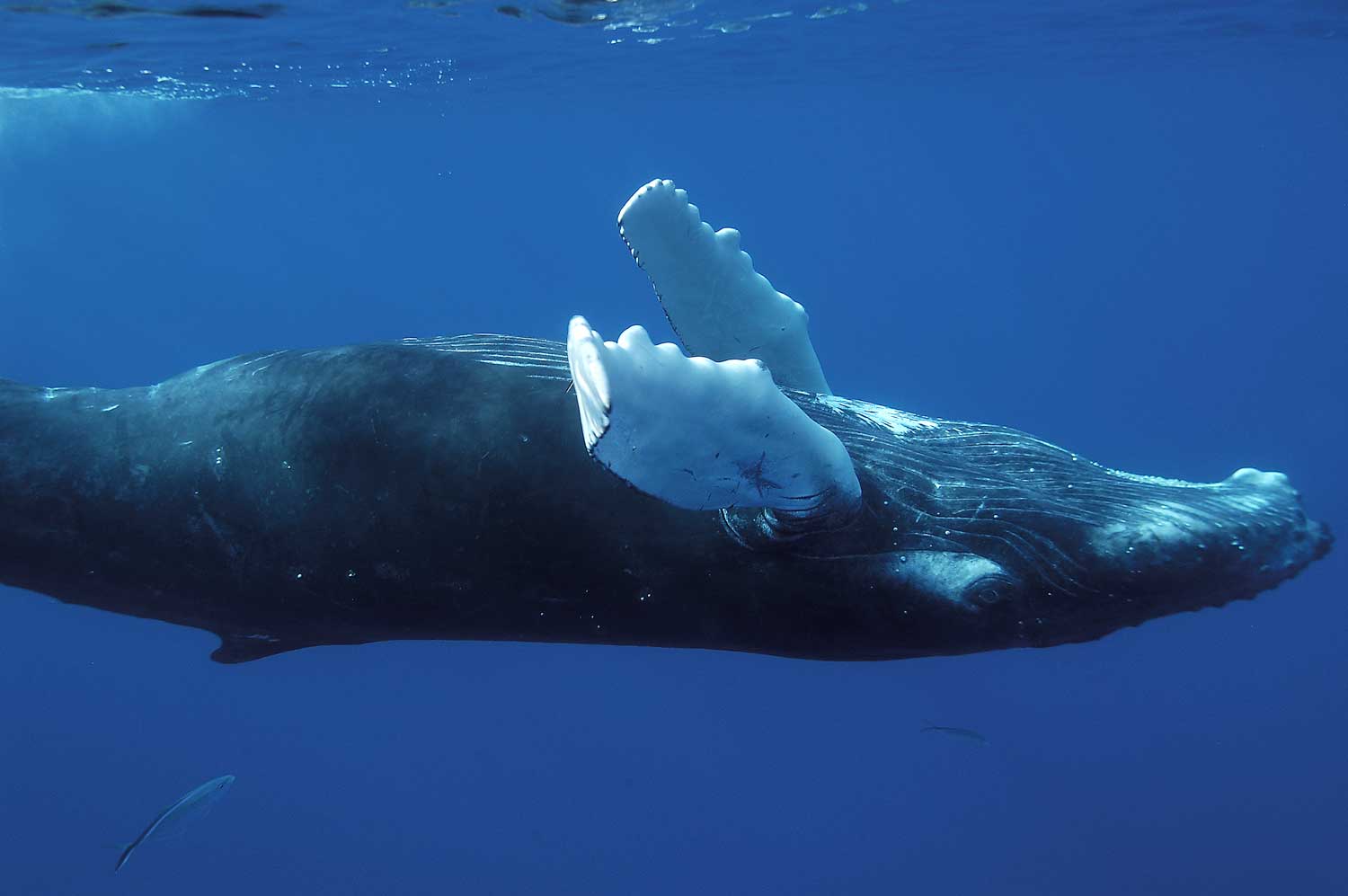
Humpback whale calf in Samaná Bay
Photo: Kike Calvo / Alamy Stock Photo
Watching the whales reminded me that it’s not just where you travel and what you do, but how you take it in that counts. The whales force you to slow down and take it all in, water droplet by water droplet, pirouette by pirouette.
As the motor slowly revved up again, my marine biologist tour companion told me how some whales use sonar and echolocation, and others make flute-like keening calls. I was awed to learn from our guide that their “whale music” can be heard from distances up to 20 miles away.
Walking back to the car it was hard to believe we’d only been out for four hours. On the open sea, time had slowed down, and now the peace I had been seeking had washed up on shore with me.
Afterwards we strolled along the Avenida la Marina to the Museo de las Ballenas (Museum of Whales). The boulevard is lined with restaurants, souvenir shops and cafes, and our stroll was just the right length to enjoy an ice cream cone before it could melt under the hot sun.
Stepping into the coolness of the museum, we saw an awe-inspiring humpback whale skeleton, fully 40 feet long. Taking in the sheer size up close helped to put into perspective the scale and majesty of the living creatures we’d just watched playing out on the nearby sea. Staring up the whale, I knew it was the kind of thing my grandfather would have appreciated.
When you can see the whales in Samaná
Whale-watching season runs January 15 through to mid-March, when thousands of whales arrive with clockwork precision and spend two months giving birth, nursing, and playing with their calves.
Getting there
Getting to Samaná Bay is half the fun - especially if you hire a car and drive the scenic route from Santo Domingo. The picturesque road is about 110 miles long with the last 20 miles right on the coast. It’s in good condition and takes about two and a half hours to cover.
Before hitting the coast at the town of Sanchez, the road winds through rolling hills and lushly-forested valleys, sun-scorched highlands and flat farmlands sprinkled with old sugarcane plantations. Though you won't find formal pit stops or rest areas, you will find fresh water and coffee and small gas stations every half hour or so. Expect to pay a toll at several booths along the way - you’ll need the equivalent of USD $25 in pesos, including some small change.
During the high season, you can jump on a coach or tour bus departing from most major cities. For well-heeled travelers, a small local airport accommodates chartered planes.
How to book
Prices and perks vary greatly. It is recommended to book a week ahead of time, particularly if you want to go with one of the better-known tour operators. Many hotels offer a whale-watching package, or you can book with the operators directly.
Costs range from USD $50-60 per adult, and roughly half that for children. Tours generally last three to four hours. Unless you opt for a more exclusive tour, expect to share the boat with 50-60 other tour passengers.
For a more exclusive whale-watching adventure, the Barceló Bavaro Grand Resort’s VIP package includes a visit to the spectacular Limón Waterfalls and a trip to Bacardi Island.
Many smaller hotels in Samaná have connections with their own whale tour operations. They offer all-inclusive packages covering pick-up from your hotel, lunch and a ride home to your doorstep at the end of the day. We chose a middle of the pack tour operator who was experienced but promised fewer than 40 on the boat. If you’re driving yourself, there’s parking near the marina.
Written by Emily Bauman.
Published December 2021.
Explore more Wildlife & Nature
Get up close with wildlife in the Sierra de Bahoruco National Park
In the Southwestern area of Hispaniola, only a couple of
Tropical Birds of the Dominican Republic
Look out for these amazing rare birds like woodpeckers, hummingbirds,
Ojos Indígenas Ecological Reserve
Just minutes from Punta Cana resorts, swim in incredible Larimar-colored
Best Bird Watching Sites in Dominican Republic
Our Best Selections for Your Dominican Birdwatching Checklist
Constanza: The Unexpected Dominican Destination
Venture beyond the beaches and into the mountains in the
Río San Juan: a low-profile destination on the north coast
This low-profile coastal attraction has lots to offer but has
How to See the Whales in Samaná Bay
If you're in the Dominican Republic between January and March,
Go Mountain Biking in the Dominican Republic
Everything you need to know about mountain biking in the
Hike to the Salto de Jimenoa Uno Waterfall
The Salto de Jimenoa Uno waterfall appears in the opening
Your Pocket Guide to Miches
Get the latest on the pristine destination of Miches in
Categories
Tags
Share
Subscribe to our newsletter
Get more travel inspiration, tips and exclusive offers sent straight to your inbox

